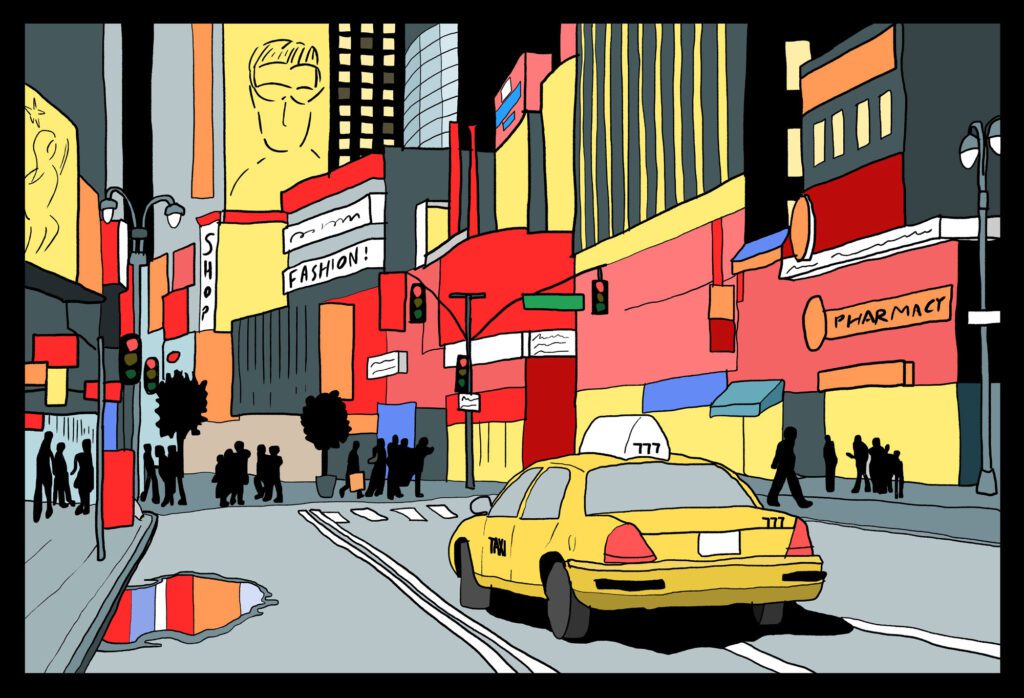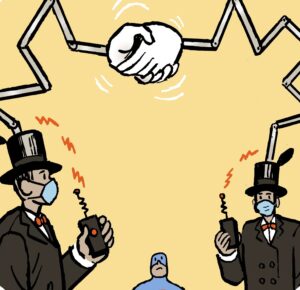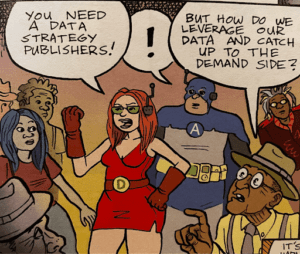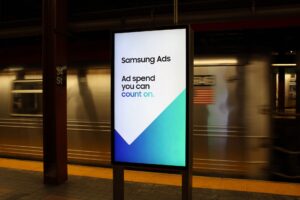The out-of-home channel has a reputation for being behind the digital times.
That reputation often means advertisers treat OOH as a separate channel that’s the domain of specialists, rather than as part of their omnichannel digital campaigns.
But the ad industry’s agentic AI revolution is giving OOH the perfect chance to reinvent itself, according to Premesh Purayil, chief technology officer at OUTFRONT Media.
That desire for reinvention inspired the new initiative OUTFRONT, announced Wednesday, to create agentic AI tools for executing and measuring OOH campaigns. These tools will be built on API connections provided by MadConnect (formerly known as MadTech) and cloud infrastructure provided by AWS.
While OUTFRONT doesn’t currently have any agentic AI tools on the market, its plan is to offer off-the-shelf products as well as bespoke products for individual agencies, all in an effort to modernize OOH sales.
Remaking OOH with AI
OUTFRONT’s agentic AI is being designed to communicate with ad agencies’ proprietary and whitelisted omnichannel buying platforms, Purayil said.
The goal is to provide specialized tools to find appropriate OOH inventory based on a campaign prompt, as well as to execute automated buys and carry out mid- and post-flight measurement and optimization.
This approach will allow OOH to be more easily activated and measured alongside digital-native channels like online display, social media and CTV.
Because OOH data and inventory is “effectively offline,” Purayil said, OOH campaigns have traditionally been handled by specialist ad agencies and specialized in-house brand teams, which typically work directly with OOH publishers to plan and activate campaigns.
Sometimes, even knowing what OOH inventory is available in a given market – let alone which inventory to target for a campaign – requires direct negotiation with publishers and the deep institutional knowledge of OOH specialists, said Paul Woolmington, CEO of ad agency Canvas Worldwide.
But while the OOH specialist approach can have benefits, Woolmington said, the strategy of using a dedicated team for the channel hasn’t really kept up with how omnichannel agency teams approach optimization and measurement.
Roles like chief technology officer, chief product officer and chief data storyteller are growing in importance, Woolmington said, and agencies are increasingly empowering these executives to make budgetary decisions. Meanwhile, he added, agencies are attempting to differentiate themselves with their own data products and automated campaign planning tools.
“We’re investing in data platforms, outcomes road maps and holistic tools that do data storytelling,” Woolmington said. “We have to join the dots between the different mediums and the different measures for those mediums. And now we have new partners in AI that we can adopt on top of existing measures.”
Promoting programmatic adoption
OOH’s failure to keep up with these trends has largely been isolated to the US market, Woolmington said, where “muscle memory” has thus far trumped innovation.
In geographic regions outside the US, like in Europe or Australia, the OOH market has done a better job of adapting to new automated buying systems, Woolmington said. As a result, in some international markets, the OOH channel has greater market share than in the US, he said – particularly when it comes to omnichannel programmatic campaigns.
So, if OOH wants to grow its slice of the pie in the US, Woolmington said, “you have to utilize new forms of measurement and ways of operationalizing a complex ecosystem to make the insights, planning and buying of the medium more efficient and effective and have proof points of its efficacy.”
With that need to evolve in mind, Woolmington said, what Outfront is attempting to do is “create an end-to-end, cloud-based, AI-enabled planning, inventory management and buying system that also has measurement built into it.”
And, he added, he hopes this system becomes a template for the wider US OOH industry – one that not only benefits omnichannel agency teams but can help bring OOH specialist teams more fully into omnichannel planning.
The AI carrot
Clearly, the US OOH market has been due for a data-driven upgrade. But what’s changed from a technology standpoint to enable this evolution? Is this proof of the transformative power of AI tech?
Not really, according to OUTFRONT’s Purayil. To be clear, he said, OUTFRONT didn’t have to modernize its ad tech stack through the use of agentic AI tools.
Rather, he said, the company decided to lean into agentic AI because ad agencies were already building their own in-house agentic tools and because there’s so much AI enthusiasm among agencies.
When OUTFRONT first started working with MadConnect to modernize its approach, the companies were originally pursuing basic API integrations with other platforms, Purayil said.
“We were working with MadConnect to integrate all of our data sources and be that pipeline into every individual agency,” he said. “But this year in Cannes, every conversation we had was, ‘Can you do this through an AI agent?’ Well, yeah, actually, we can.”
Leaning into agentic AI opened doors to integrating with ad agencies that may have otherwise written off OOH as an old-school media channel, agreed Bob Walczak, Founder and CEO of MadConnect.
When it came to actually getting agencies to agree to API connections with their proprietary tech and tackle the problem of integrating OOH into wider media plans, “AI really has been that driver,” Walczak said. Previously, the nuances of the OOH channel and the perception that it’s best handled by specialists “kept it out of that conversation,” he added.
Plus, Walczak said, agentic AIs can use the Model Context Protocol (MCP) open standard to access preprogrammed tools that understand the nuances of OOH data and adapt it to cross-channel planning.
OUTFRONT and MadConnect do the complicated programming of these tools on the backend, then provide access to an MCP server that agentic AIs can ping to access these tools. AWS provides the cloud infrastructure to enable it all.
Making agentic AI a reality
Woolmington said he’s enthusiastic about eventually using OUTFRONT’s AI to more accurately compare the OOH channel to the booming CTV channel, particularly as OOH inventory is used for programmatic CTV reach extension.
“In a world that’s increasingly programmatic and increasingly CTV, how can you build bridges through your planning system that allow you to make intermediate decisions?” he said. “How are we able to then look at video in a broader context?”
Plus, Woolmington said, now that advertisers are getting more granular data from even large CTV incumbents, the opportunities to do in-depth cross-channel measurements and optimizations have exploded – which is a problem that AI is uniquely positioned to address, he added.
“It feels like we’re doing performance analysis across almost every channel now, even across, God bless them, the NBCs and Disneys of this world,” he said. “Out of home has been a bit of a laggard on it, but this is a massive leap forward.”

















